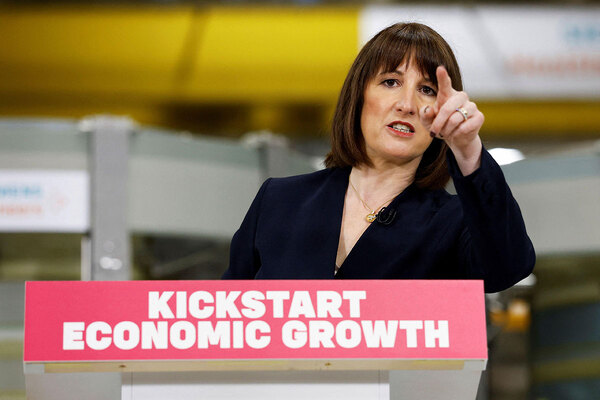The year that changed social housing forever
With a new government, massive reforms and brutal cuts, the past 12 months has seen unprecedented change to the social housing landscape. Inside Housing looks back at the major events of 2010
Finance
It’s been a turbulent 12 months in the world of social housing finance.
The year began with councils facing serious cash flow problems after the previous Labour government announced changes which meant social landlords’ target rents would increase more steeply than expected.
The coalition government, elected in May, wasted no time in making its mark, announcing a £610 million package of funding cuts and spending freezes, threatening more than 7,000 new homes. In September the coalition announced that £186 million of funding for kick-start schemes would go ahead.
The looming cuts in capital spending and a lack of conventional bank lending persuaded more housing associations to look for alternative sources of finance. The capital markets, where government bonds were at their lowest price for nearly three years, proved fertile territory. London & Quadrant, Notting Hill Housing Trust, Hyde, Sanctuary, Circle Anglia and a trio of Northern Ireland landlords all issued UK bonds, raising more than £1 billion between them.
In July Places for People broke new ground by raising £76 million on the Japanese bond market in the sector’s first unsecured bond deal backed by the creditworthiness of the issuer and not an asset.
September saw the financial collapse of contractor Connaught leaving hundreds of landlords scrabbling to keep their repairs and maintenance services running. And it was déjà vu two months later when contractor Rok joined Connaught on the scrap heap.
In October it emerged a group of landlords were discussing an audacious plan to set up a £175 million bank to offer shared ownership mortgages. But the plan has been hit with problems after several landlords pulled out.
Later in October, chancellor George Osborne announced that capital funding for the sector would be cut in half from £8.4 billion to £4.5 billion. Landlords are now planning ahead, as future grant is reserved for landlords offering fixed-term tenancies with affordable rents at 80 per cent of market value. The change prompted Inside Housing to declare the end of social housing as we know it.
Regulation
As if the financial upheaval was not enough, further fundamental changes affected housing regulation.
The Tenant Services Authority completed its long-awaited takeover of local authority and housing association regulation in April, having published its new regulatory framework in March. This was largely welcomed by the sector, although tenant groups were disappointed that ‘local standards’ agreed between tenants and landlords were watered down to ‘local offers’.
With impeccable timing, in the week the framework was published, the Conservative Party ended months of rumours by confirming that it planned to scrap the regulator if it came to power. Within weeks of the coalition forming in May, senior TSA staff began to clear their desks, starting with executive director of tenant services Phil Morgan and executive director of risk and assurance Clare Miller.
Housing minister Grant Shapps drove the last nail into the TSA’s coffin when he said he would ‘delete’ the regulator in an exclusive Inside Housing interview before June’s Chartered Institute of Housing conference in Harrogate. There, he declared the TSA was ‘toast’. But the Treasury had other ideas. Concerned by complaints from lenders that scrapping the regulator could damage housing associations’ credit ratings, it launched an independent review of regulation.
When the review reported back in October, it concluded that the TSA should be scrapped and that regulation should pass to an independent committee within the Homes and Communities Agency. At the end of the month, chief executive Peter Marsh announced he was leaving after less than two-and-a-half years running the organisation.
In the meantime, communities secretary Eric Pickles gave the sector one of its biggest surprises of the year. On a Friday afternoon in August he announced he was also scrapping the Audit Commission. Arrangements for housing inspections are still unclear, so expect plenty more fireworks in 2011.
ALMOs

Arm’s-length management organisations have been ringing the changes this year. It has been out with the old, with the first stock transfers to housing associations and housing services returning to councils; and in with the new as the sector considers new models and new opportunities once the decent homes programme has creaked its way past the finishing line.
In March we revealed that north London-based Barnet Homes was looking to run the borough’s soon-to-be-doomed building schools for the future programme. Four councils in Kent also created the first super-ALMO, the East Kent Shared Housing Landlords Services. The amusingly-named CoCo (community-owned, council-owned) model for ALMOs also made its first appearance when, in April, the National Federation of ALMOs said it was considering the split-ownership model to attract private finance.
By the start of December, Golden Gates Housing in Warrington became the first ALMO to transfer to a housing association, while Slough was the first council to close its ALMO and return landlord services in-house. Our recent ALMO round table (Inside Housing, 10 December) picked out 2011 as a seminal year for the future of the sector - so watch this space.
Campaigns
Inside Housing lobbied the government with three major campaigns in 2010, winning unprecedented support across the sector - and an industry award for its efforts.
Safe as Houses
In March, we delivered a petition to 10 Downing Street marking the end of our Safe as Houses campaign. The campaign called for improvements to fire and gas safety in social homes. It was prompted by two tragedies in the past two years: the death of shared owner Elouise Littlewood of carbon monoxide poisoning in her new housing association flat; and the death of six people after flames ripped through south London tower block Lakanal House in July 2009.
Safe as Houses achieved its first two aims in November 2009 when the Tenant Services Authority agreed to set up a national database of tower blocks and 100 social landlords signed up to the campaign’s call for fire safety notices to be installed on every landing of tower blocks.
In March this year it achieved its third and final aim when the previous government announced it would change building regulations to require carbon monoxide alarms to be installed in all new homes with solid fuel heating systems.
The success of Safe as Houses was recognised last month by the British Society of Magazine Editors which named it Campaign of the Year at its annual awards event in London.
House Proud
With the general election on the horizon, Inside Housing joined forces with the Chartered Institute of Housing in January for the launch of the House Proud campaign.
The campaign set about highlighting the massive benefits the sector delivers to society every day to ensure it was a key issue in the run-up to the general election in May. House Proud focused on the sector’s contribution to education, sustainability, worklessness, anti-social behaviour and health highlighting key statistics to make politicians sit up and take note.
A week before the nation went to the polls, House Proud achieved its aim when housing was included in the three main political parties’ manifestos.
What’s the Benefit?
Three months after the election, Inside Housing launched its third campaign of the year. What’s the Benefit? was launched in response to the newly formed coalition government’s plans to cut the £21 billion housing benefit bill announced in June’s emergency Budget.
The campaign attracted widespread, high-profile support from the start from housing providers, homelessness charities and politicians alike.
What’s the Benefit? calls for fairer reforms to the housing benefit system to stop thousands of vulnerable people from being forced from their homes and into poverty. The first of its aims - to get more than 500 signatures on a petition - was smashed as more than 1,160 people flocked to sign up, while the campaign’s Facebook page has attracted 557 fans.
The campaign achieved its second aim just three weeks in, when it secured a parliamentary inquiry into the potential impact of the cuts. As a result of the campaign the government has agreed to postpone cuts by nine months for existing claimants.
This week, What’s the Benefit? draws to a close with its third and final aim: the presentation of a raft of alternative measures to key ministers in the coalition government.

Regions
Northern Ireland
Questions were raised about the future of the Northern Ireland Housing Executive in April after the Democratic Unionist Party said it would consider a restructuring of the organisation in its election manifesto. The executive insists the restructuring would not place its future under threat.
Wales
The Welsh Assembly Government puffed out its chest in November after beating its target of delivering 6,500 new affordable homes by March 2011. However, Welsh Liberal Democrat housing spokesperson Peter Black grumbled that the assembly was massaging its figures.
The Welsh Assembly Government pledged to set its own priorities after housing funding from Westminster was cut from £15 billion this year to £14.5 billion next year.
Scotland
New social tenants north of the border were stripped of the right to buy their social homes as the sun set on 2010. The Housing (Scotland) Act, introduced last month, prevents new housing association and council houses being snapped up by their occupants. Shelter Scotland was happy the Scottish Parliament saw the bill through.
The comprehensive spending review revealed in October that Scotland’s affordable housing budget will drop by £1 billion to £28.2 billion next financial year.
The environment

2010 was the year the sustainable housing agenda came to the fore. In April, the previous government introduced the feed-in tarriff, an incentive paid for electricity generated by solar photovoltaic panels. This triggered a gold rush of investors chasing returns from the tariff - including social landlords - and turned roofs into a valuable commodity.
In October’s comprehensive spending review, the new coalition government backed up its green rhetoric by investing £860 million into a renewable heat incentive, which will work in a similar way to the FIT but for renewable heat technology. The government also committed to launching a £1 billion green investment bank.
The year culminated in this month’s Energy Bill which includes the government’s flagship £7 billion a year ‘green deal’, to retrofit 26 million homes. The scheme works by removing the up-front costs of refurbishment measures and passing them on to investors who will recoup the outlay through energy savings. Landlords can become accredited green deal providers and compete with the private sector for new revenue streams.
Despite all this, the sector still awaits the long-anticipated definition of zero carbon - maybe next year.
Party politics
The political field in 2010 was a game of two halves. With a May election the worst kept secret in Westminster, the first five months saw a slew of policy pledges from the limping Labour administration.
Former housing minster John Healey fired the first phoney war shot in January by announcing a clampdown on unlawful sub-letting of social homes. His get-tough approach was more than matched by the work and pensions secretary-in-waiting. Iain Duncan Smith took his hardline approach right into the heart of housing policy territory. The former Tory leader took to the podium at the Chartered Institute of Housing’s presidential dinner to claim that vulnerable social tenants were breeding tomorrow’s criminals.
Labour’s 13-year reign ended in May after the Conservative and Liberal Democrat parties formed an unlikely political alliance. New communities secretary Eric ‘the bulldozer’ Pickles quickly geared up to demolish the ‘undemocratic’ quangos his predecessors had happily bankrolled. In opposition, the Tories had already tattooed targets onto the heads of the Tenant Services Authority and the nine regional development agencies, which set housing targets in their areas.
In June, Mr Pickles hacked £140 million from the Communities and Local Government department’s quango budget, striking the first match for the quango bonfire.
The ritual slaughter of sacred housing and welfare policy cows then ensued. The principle that housing benefit should cover claimants’ rent was dissolved to save £1.8 billion. Then in August, prime minister David Cameron let slip that security of tenure was being considered for the cull. ‘There is a question mark about whether…we should be asking when you are given a council home, is it for a fixed period?’ he asked a Birmingham audience.
Labour managed to grab (briefly) the headlines in September as Ed Miliband beat his brother in the party’s leadership election and installed Alison Seabeck as shadow housing minister, and Caroline Flint as shadow communities secretary.
In October, the most devastating blow to social housing was delivered during the comprehensive spending review. The chancellor/axeman-in-chief George Osborne effectively eliminated government social housing funding for the first time since 1945. The Treasury would only fund homes let at 80 per cent market rent, he announced.
November saw the unveiling of government proposals to scrap tenancies for life by introducing alternative fixed-term ones of up to two years. Labour, meanwhile criticised the housing reforms, warning of homelessness and an exodus of people who would no longer be able to affford to live in city centres.
The year was topped off in December with the coalition’s first major piece of housing legislation: the Decentralisation and Localism Bill - the government’s first significant step on its road to major housing reform.
As debate about whether the reforms are driven by necessity or ideology, and the strength of the coalition is tested, the field of politics and policy could look very different in 2011.
Row of the year

In a year when housing took more than its fair share of body blows, it is the continuing scrap between developer Cala Homes and communities secretary Eric Pickles which scooops the dubious title of row of the year.
Cala Homes and Mr Pickles first locked horns in July over the minister’s decision to scrap regional planning targets. Mr Pickles sent a letter to councils telling them he had done away with regional spatial strategies to free them from prescriptive bureaucracy. So far, so radical. But when Cala was subsequently refused planning permission for 2,000 homes in Winchester, it decided it could not appeal the decision without a national planning policy in place.
The Edinburgh-based house builder claimed Mr Pickles acted unlawfully, as the move required primary legislation and that transitional arrangements should have been in place before the announcement.
The challenge went all the way to the High Court and Cala won, simultaneously leaving Mr Pickles with egg on his face and adding another layer of confusion to the already complicated local planning system.
But the fallout didn’t end there. In December, Cala applied for a second judicial review to clarify planning framework after the Communities and Local Government department sent a letter to chief planners telling them the judgement ‘changes very little’.
Cala may have won its day in court and the RSS still stands, for now, but council planning departments have been told to act like they have already gone.
This is one row that looks set to cause Mr Pickles a headache well into 2011. In the meantime, planners can only hope that the Decentralisation and Localism Bill clears the matter up. We’re not holding our breath though.
2010’s heroes
LGBT-friendly landlords
Five housing organisations proved their inclusive credientials by making it into Stonewall’s top 100 lesbian, gay, bisexual and transgender-friendly employers.
Housing association Gentoo topped the charity’s list at number 16, while Metropolitan Housing Partnership came in at number 27, Berneslai Homes at 82, Your Homes Newcastle at 90 and Knowsley Housing Trust at 97.

Housing’s superheroes
The Housing Heroes Awards once again turned the spotlight on the wealth of talent and commitment among the people who work social housing.
Francis Kabia, a neighbourhood warden at Brent Housing Partnership, scooped the Inspirational Colleague of the Year award at this year’s event. Mr Kabia fearlessly intervened when thieves tried to steal heaters from a contractor’s van on his north west London estate. They threatened to kill him but Mr Kabia stood his ground and the thieves fled.
Bob Russell
Bob Russell, Lib Dem MP for Colchester, became a thorn in the coalition’s side this summer when he started campaigning against the housing benefit cuts. He tabled four early day motions against the cuts in July, and was the only MP to abstain in an opposition debate on housing benefit: the rest of the Lib Dem backbench voted with the government.









